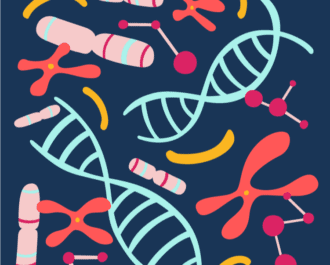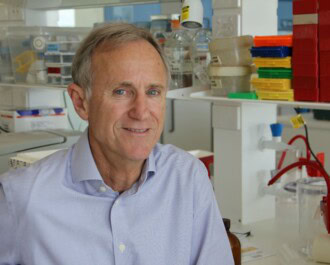
A scientist at QIMR Berghofer Medical Research Institute has co-led a major international study which has identified 26 genetic variants, or genetic ‘typos’, which predispose women to developing different subtypes of breast cancer.
The study, which examined DNA from nearly 119 000 women, has been published in the prestigious journal Nature Genetics.
It was funded by the National Health and Medical Research Council and the National Breast Cancer Foundation.
The head of the Functional Cancer Genomics Laboratory at QIMR Berghofer, Dr Stacey Edwards, said the study’s findings were significant.
“In this study, we have identified 26 new genetic variants that increase a woman’s risk of developing several different subtypes of breast cancer,” Dr Edwards said.
“As well, this is the first time researchers have been able to show that specific genetic variants increase a woman’s risk of developing the subtype of breast cancer known as ER-/PR-/HER2+.
“Until now we didn’t know there was a genetic basis for this rare and treatable subtype of breast cancer.”
Dr Edwards said in future the findings would help doctors to predict those at a higher risk of developing breast cancer.
“These genetic variants will be included in future genetic tests and will help to predict if a woman is at a high risk of developing breast cancer, and, if so, what subtype of breast cancer she is likely to develop,” Dr Edwards said.
“We hope that in future doctors will be able to use the presence of these genetic variants to diagnose women with ER-/PR-/HER2+ and other subtypes more quickly.”
Scientists have now identified approximately 170 regions of the genome that increase a woman’s risk of developing breast cancer.
In this study Dr Edwards and her international collaborators were only looking at one of those regions – the location of the gene ESR1. This gene is one of the most highly studied in the field of breast cancer research, and is one of the most significant in determining a woman’s risk of developing breast cancer.
As part of the study, Dr Edwards and her collaborators examined how those 26 genetic ‘typos’ increased the risk of developing breast cancer.
The researchers found that the variants did so by influencing the expression of ESR1 and two other genes.
“This finding is significant because it’s answered a lot of questions that we had previously only speculated about,” Dr Edwards said.
“This is the first time we’ve narrowed down the individual DNA changes at this region that we think are influencing the expression of that particular gene and increasing the risk of developing different subtypes of breast cancer.”
More News Articles
View all News


